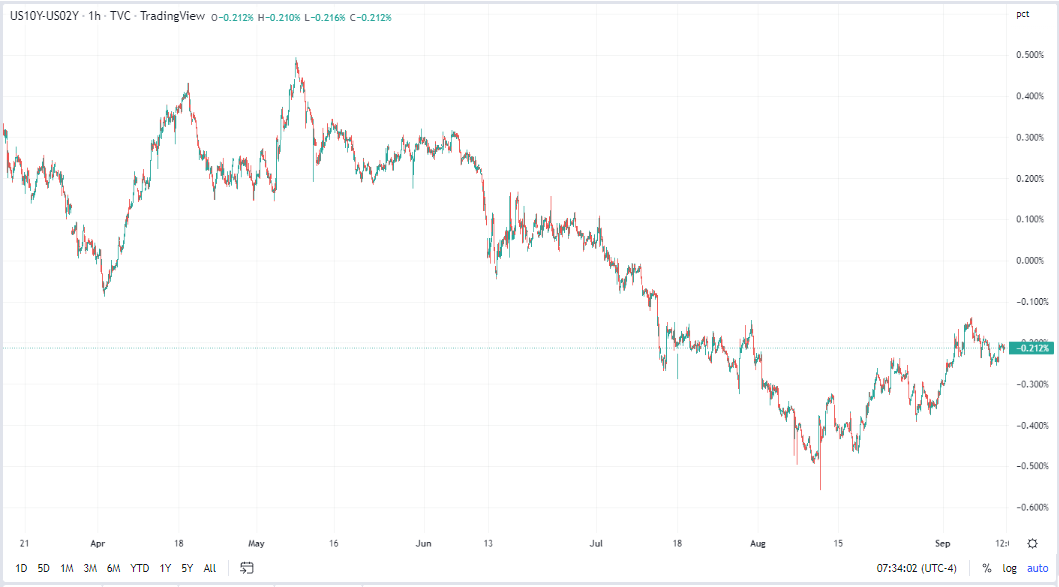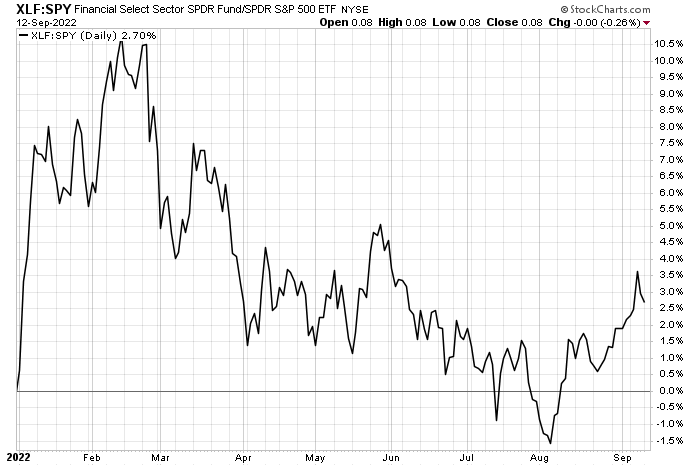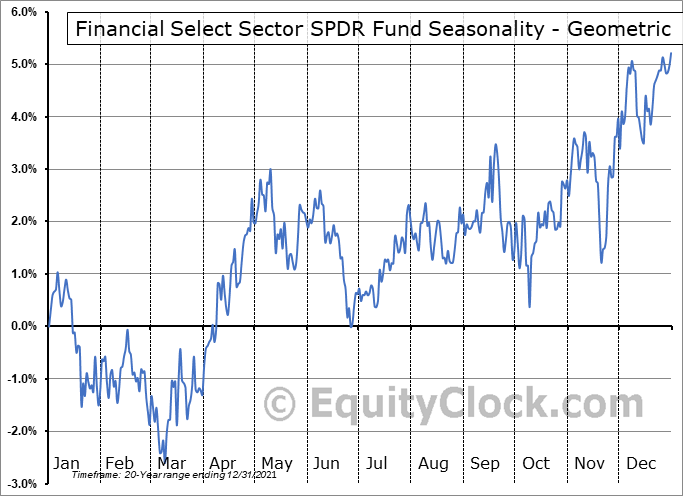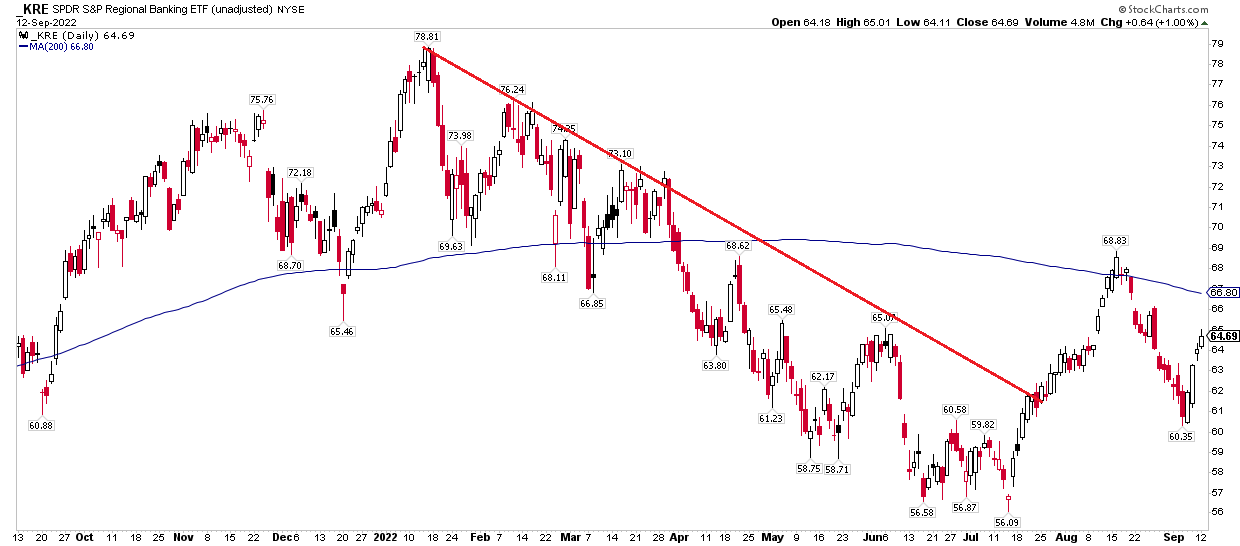Five things to watch in markets in the week ahead
- The Treasury yield curve remains inverted but has steepened significantly off its August low
- Financials, often a bellwether for the stock market, have begun to outperform amid rising interest rates
- Positive seasonal trends, a cheap valuation, and bullish regional bank price action should make investors give the sector a look
The Financial Select Sector SPDR Fund (NYSE:XLF) has recently turned up versus the broad market, in what could be a positive sign for not only the beaten-down sector but also for the S&P 500. Consider that the sector often does well when the yield curve steepens. A steeper Treasury rate curve is a hallmark of the early innings of a market recovery.
Yield Curve Steepens
The well-known 2s10s spread, the yield differential between the U.S. 10yr rate and U.S. 2yr yield cratered to near –0.6% in early August but has since recovered to near minus 20bp. Driving the 2s10s steeper has been higher intermediate-term interest rates as the market grapples with a Fed that aims to keep its policy rate higher for longer.
2s10s Turns Steeper, Remains Inverted
Source: TradingView
You’ll notice in the XLF vs. SPY relative chart below that the Financial sector has rebounded against the S&P 500 ever since the yield curve began to recover in August. From a fundamental perspective, investors need to know that bank profitability is more traced to the rate difference between the 3-month and 10-year yields rather than the 2s10s. Still, the correlation is hard to ignore here.
Technicians like to see this kind of relative strength in Financials as we head into what is often a turbulent period for stocks—the back half of September. Overall conditions often turn bullish starting in early October of mid-term election years, and that’s typically when Financials flourish, too.
Financials Vs. S&P 500: Relative Strength Since Early August

Source: Stockcharts.com
Seasonal Perspective: Financials Tend To Perform Well Starting In October
Source: Equity Clock
On valuation, the Financials sector trades a very low forward price-to-earnings ratio. According to John Butters at FactSet, the fourth-largest sector of the S&P 500 trades at just 12.1 times forward 12-month earnings. That below-market multiple puts it second only to Energy for the cheapest spot.
S&P 500 Sector Forward Operating P/E Ratios: Financials Cheap?
Source: FactSet
I like to zoom in on one of the group’s most volatile segments, also considered a bellwether of the macroeconomy: regional banks. SPDR S&P Regional Banking ETF (NYSE:KRE) broke its downtrend in late July, then paused at its declining 200-day moving average in August. Fast-forward to today, and the ETF has clawed back a chunk of its August-September losses. Traders should watch the 200-day moving average and the August high if we see continued price strength. KRE must hold its early September low, too.
Risky Regional Bank Stocks Turn Higher, Eye Key 200-Day Moving Average Again

Source: Stockcharts.com
The Bottom Line
Putting it all together, the technicals and fundamentals might just be lining up for the Financials sector. Positive headlines could come about, too, if we see the yield curve steepen further and actually un-invert. Investors should consider getting ahead of that possibility by dipping their toes into yield-curve-sensitive names like money-center and regional banks.
Disclaimer: Mike Zaccardi does not own any positions mentioned in this article.
